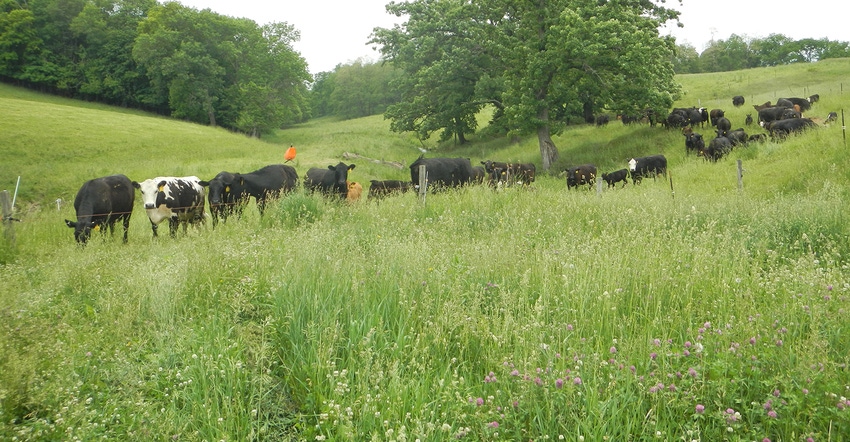February 14, 2018

My son and I graze 250 beef cows in western Wisconsin. We sell our bulls when they are yearlings. During the winter months, the cows are housed in loafing sheds on our farm and fed baled hay and corn. We have 200 acres of pasture and 200 acres of hay and corn ground. We had a good year in 2017. We kept an extra 25 heifers last summer, and we are expanding our herd a bit. The neighbor sold his dairy cows last fall and asked if we want to rent an extra 100 acres of pasture and 150 acres of cropland this spring. We could use the land and the feed. The land yields 175 bushels of corn per acre. His fences need some work, but he has good access to water on the pasture. He asked me to make an offer on land and pasture rent. If we do this, we want to pay a fair price. What are your thoughts?
Hodorff: It seems your business is ready for a period of growth. Because you are located close puts you at an advantage, so you could add a little to your offer. Hopefully you are feeding your forages and grain to your herd. Taking on cropland to sell grain probably doesn’t cash flow. This should help you become more profitable where it seems you may be a bit overstaffed now. You should take some time to put together a budget and forecast some different price points. I wouldn’t add any machinery to your existing line. Instead, contract your harvesting and planting operations with a custom operator.
Miller: Contact your Extension ag agent. They can provide you with pasture and farmland rent averages for the state and your area. This information is compiled by the National Agricultural Statistics Service from periodic surveys. Iowa State and University of Illinois also publish pasture and land rent averages. Iowa State’s most recent information [2017] had the average farmland rental rate at 2.9% and the pasture rental rate at 1.7% of the value of the land. In any case, I suggest putting your agreement in writing. Good luck with negotiating an equitable rent agreement.
Wantoch: I would agree that you may need the additional land base for your expanded beef herd. University of Wisconsin Extension’s recommendation for space requirements for cow-calf pairs on pasture is 1 to 3 acres per animal, 0.5 to 1.5 acres for weaned calf/stocker, and 1 to 2 acres for yearling/finishing. You also will want to double-check that you have enough space in your loafing sheds for the additional cows to ensure they have protection from wind and precipitation during inclement weather.
Regarding your questions about farmland and pasture rental rates, determining what is a fair price may be different for you, as the operator, as compared to the landowner. Local market conditions and your relationship with your neighbor may have some bearing on determining the rental rates. For a starting point to your negotiations, I would review the USDA National Agricultural Statistics Service county cash rent report. For example, west-central Wisconsin farmers who were surveyed in mid-2017 reported average nonirrigated cropland average rent was $120 per acre, and pasture rent was $36.50 per acre. The success of a lease depends on meeting the needs of all parties that are involved, so best of luck in your discussions!
Agrivision panel: Doug Hodorff, Fond du Lac County dairy farmer; Sam Miller, managing director, group head of agricultural banking, BMO Harris Bank; and Katie Wantoch, Dunn County Extension ag agent specializing in economic development. If you have questions you would like the panel to answer, send them to: Wisconsin Agriculturist, P.O. Box 236, Brandon, WI 53919; or email [email protected].
You May Also Like




